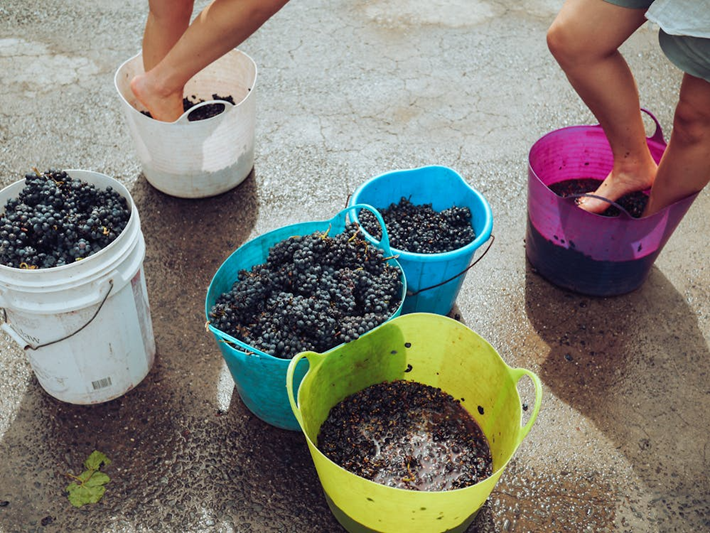Red wine is made through a detailed process that involves several key steps, starting with the harvesting of grapes. Here’s an overview of the typical process:
1. **Harvesting**: Grapes are picked from vineyards when they reach optimal ripeness. This can be done by hand or by machine, depending on the vineyard’s methods and the quality desired.
2. **Crushing and Destemming**: Once harvested, the grapes are crushed to release their juice. In many modern wineries, machines are used to destem the grapes, which removes the stems that can add bitterness to the wine. In traditional methods, grapes may be crushed by foot in large tubs.
3. **Fermentation**: The crushed grape mixture, known as must, is placed in fermentation vessels. Yeast is added (though some winemakers rely on natural yeasts) to begin the fermentation process, where the sugars in the grape juice convert to alcohol and carbon dioxide. This process can take from several days to a few weeks.
4. **Macération**: During fermentation, the grape skins remain in contact with the juice, which allows the wine to extract color, tannins, and flavors. This stage can last from a few days to several weeks, depending on the desired style of wine.
5. **Pressing**: After fermentation, the wine is separated from the solid parts by pressing. This can be done in a wine press, and the resulting juice (free run juice) is collected. The solids, including the skins and seeds, may be pressed further to extract additional juice, which can also be used.
6. **Malolactic Fermentation (optional)**: Many red wines undergo a secondary fermentation called malolactic fermentation, where harsh malic acid is converted into softer lactic acid. This process can add complexity and smoothness to the wine.
7. **Aging**: The wine is then aged in barrels or tanks. Aging can enhance the flavor and texture of the wine, with oak barrels adding additional characteristics such as vanilla and spice. The length of aging varies depending on the type of red wine being made.
8. **Bottling**: After aging, the wine is usually filtered and then bottled. Some wines may undergo additional aging in the bottle, while others are released earlier.
9. **Labeling and Marketing**: Finally, the bottles are labeled, and the wine is prepared for distribution and sale.
Each step in the process can be adjusted to create different styles and flavors of red wine, making winemaking both an art and a science.
